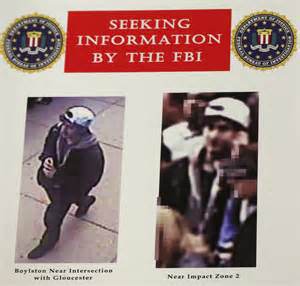
Boston Bombing Photos Prompt Additional Questions of False Flag or Hoax 40

By Kevin Cannell
A widely overlooked element of the Boston Marathon bombing event involves photographs of the backpacks carrying the explosives that purportedly killed 3 bystanders and maimed and injured dozens more.
The white tabs on the black backpacks are passive RFID adhesive tracking tags/labels. Such devices are used to track merchandise from manufacture to consumer and for check-in/check-out operations. The two largest entities in the USA that require these identifying tags/labels are Walmart and the Department of Defense.
These tags might be an especially solid piece of evidence that links the event
to government perpetrators. Again, there has been no discussion of these
tags/labels beyond the fact that they were found on a security contractor’s
backpack and the backpack containing contents that exploded in front of the
Forum restaurant.
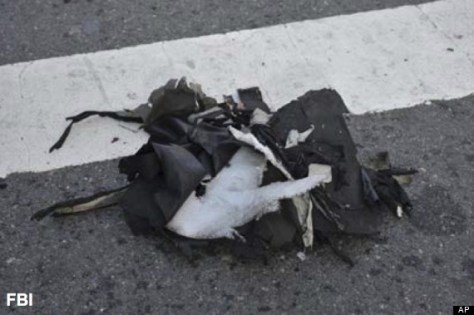
Photo 1
It’s important to note that the RFID tag/label in Photo 1 was under the nylon fabric. It appears as though someone may have pulled back the fabric to expose the tag/label. There is a photo of the bag before it was moved to this location that does not show the white tag/label or the torn fabric.
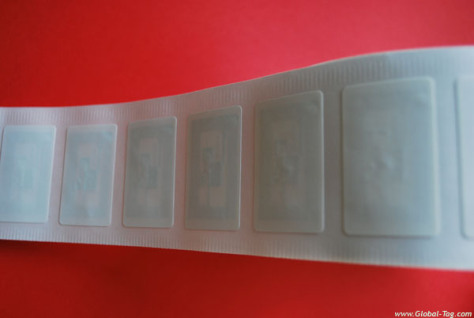
Photo 2
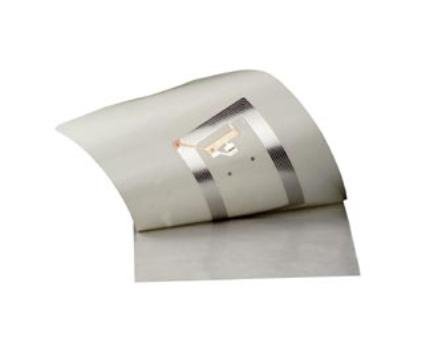
Photo 3
Photos 2 and 3 are examples of this very common type of tag/label. At the minimum the tag/label would identify the bag by its serial number. Combining the manufacture (which should be marked on the bag) and the serial number, one could learn a good deal about how this bag made its way to Boylston Street.
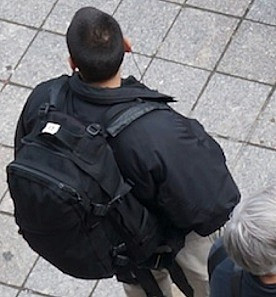
Photo 4
The presence of a similar tag on a security contractor’s black backpack raises serious concerns. (A close detail of the white tag on the upper portion of the security contractor’s backpack suggests a portion of the circuit board showing through the middle of the tag.) The security contractors and the FBI agents have similar black backpacks, but they are not all identical.
Were these two bags used in a security drill gone bad–perhaps related to the explosion announced by Boston law enforcement and media before the initial detonation occurred on Boylston?
And were the RFID tags/labels used for check-in/check-out purposes for such a drill? It seems unlikely that these two black backpacks with similar RFID tags/labels are not connected in some way. The white tag is the one visible on the upper hand carry loop. This contractor is the only one with the tag visible on the outside of his bag. Why? One can think of a few reasons but they are only speculation. The thing that stands out the most is the fact that the white tag stands out like a sore thumb.
Here are a few ideas that come to mind when applying what I’ve learned through research with the above photos of the BMB.
– The RFID tag was added to the contractors bag at the last
moment. (possible)
– The RFID tag was placed where it could be more easily read from a distance.
These tags have a short read range of
5″ to 30′ but with special equipment can be read from over 100 yards away.
(possible)
– The RFID tag was used by the rooftop spotters to keep visual contact with the
contractor. (more likely)
– The white dot is just an innocent anomaly found on this single bag by chance.
(not likely)
The white tag is there for a reason and someone out there knows why. The other contractors were using the identical backpack minus the white tag.
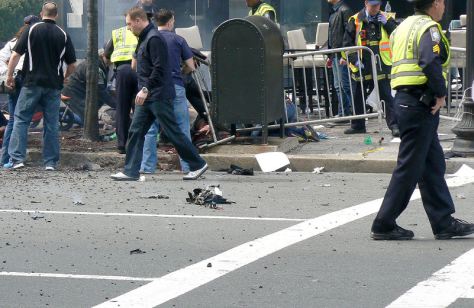
Photo 5
Photo 5- The black backpack in its original position with no visible white tag.
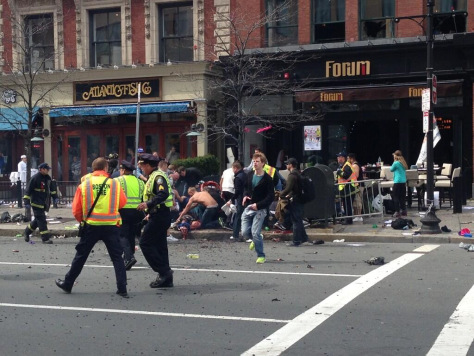
Photo 6
Photo 6- The black backpack in its new location with the white tag visible.
There is always the slight (very slight) possibility that the white tag was added to the bag by authorities within 40 seconds of the explosion.